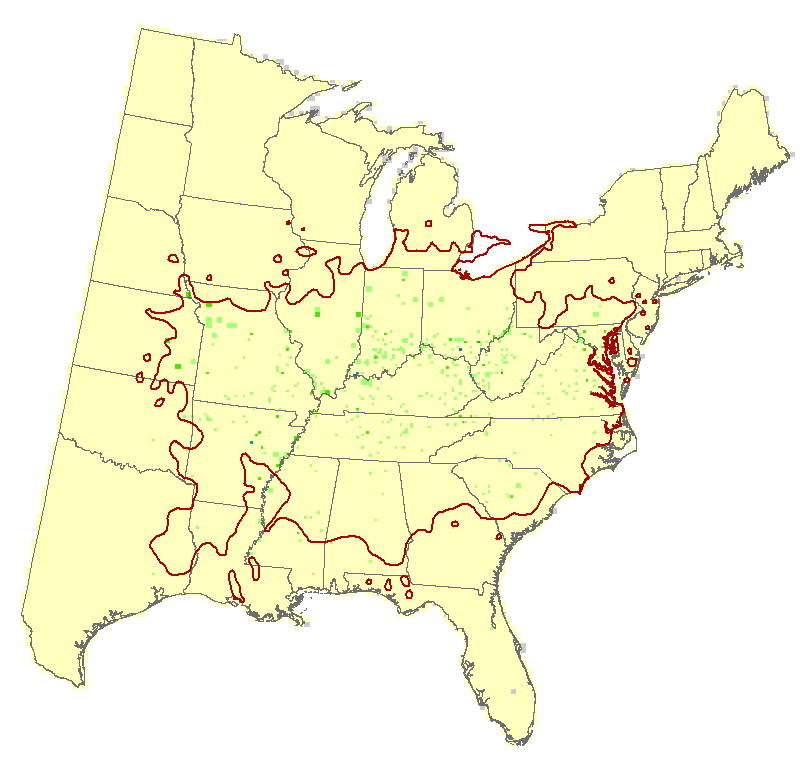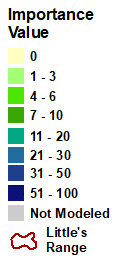pawpaw (Asimina triloba)
Model Reliability: Low
| GCM SCENARIO | % Area Occ | Ave IV | Sum IV | Future/Current IV |
|---|---|---|---|---|
| Actual | 1.5 | 1.6 | 742 | N/A |
| RFimp | 2 | 0.5 | 287 | 0.39 |
| CCSM45 | 2 | 0.2 | 130 | 0.45 |
| CCSM85 | 1.3 | 0.3 | 120 | 0.42 |
| GFDL45 | 1.9 | 0.2 | 116 | 0.4 |
| GFDL85 | 1.5 | 0.3 | 127 | 0.44 |
| HAD45 | 1 | 0.4 | 130 | 0.45 |
| HAD85 | 0.7 | 0.6 | 120 | 0.42 |
| GCM45 | 2.8 | 0.2 | 125 | 0.44 |
| GCM85 | 2 | 0.2 | 122 | 0.42 |
Regional Summary Tree Tables
Summaries for tree species are available for a variety of geographies, in both PDF and Excel format. These summaries are based on Version 4 of the Climate Change Tree Atlas
Interpretation Guide
Pawpaw is very uncommon, occupying only 1.4% of the eastern US, but with its core area confined to the central portion of the eastern US. The reliability of the model is low, but it does show some potential to expand its habitat to the south. Nonetheless, because of its current rarity and susceptibility to drought, we rate it as having a very poor capacity to cope. SHIFT has negligible impact on infill or migration.
Family: Annonaceae
Guild: shade tolerant
Functional Lifeform: small deciduous tree
| 3.7 | -0.48 |
| -0.32 |  |
MODFACs
What traits will impact pawpaw's ability to adapt to climate change, and in what way?:
Primary Positive Traits
Shade tolerance
Primary Negative Traits
Drought



